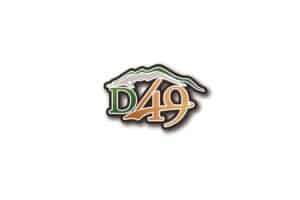According to the Aug. 12, 2021, news release from the Colorado Department of Education, the results of the Colorado Measures of Academic Success assessments taken last spring indicated significant decreases in achievements from 2019 to 2021 across all tested grades and subject areas.The report states that the Colorado Measures of Academic Success typically tests the same grades every year; last year, the state made an exception because of COVID-19 interruption, and reduced the testing for students. The wide availability of different learning settings ó in-person, remote learning or hybrid ñ- meant that students had varied access to take state tests. As a result, some student groups are overrepresented as to the results while others can be underrepresented. Overall, participation on all the required tests fell by about 20 to 30 percentage points from the previous year in all grades across the state.Kathleen Granaas, coordinator of Academic Performance, El Paso County Colorado School District 49, said CMAS scores were heavily impacted by participation the past two years. In a typical school year, D 49ís participation is generally as high as the stateís average, which is about 97%, she said.The yearly testing requirements are dictated by state and federal laws. Granaas said sometimes state laws exceed the federal law; for example, states can determine how to implement science assessments. Colorado tests science in fifth, eighth and 11th grades, she said. Third to eighth grades test English language arts and math for CMAS. The high schools test PSAT 8/9 (Preliminary SAT, the national merit scholarship qualifying test) for ninth grade, PSAT 10 for 10th grade and PSAT in 11th grade, whether college bound or not, Granaas said, adding that social studies testing is currently on pause.The last regular testing with normal participation rates occurred in 2019, Granaas said. Formal CMAS and college board tests were cancelled in 2020; they were offered during the 2020-2021 school year, more for student benefit than for state requirements. ìWe canít draw a lot of conclusions from last yearís test results because of the lack of participation,î she said. ìWe donít know if we had a broad spectrum of students who tested, because for each grade and subject area, there are parts of student representation that is not being recognized in the data.î Granaas said Colorado as a whole saw only 60% to 70% participation with testing.Part of the reason for lower participation is because parents opted their student/s out of testing, she said. Students started the year with online learning and moved to hybrid learning around the fourth quarter, which is the usual time for testing, Granaas said. ìThat might be part of the reason we had a much higher rate than usual of parents choosing to opt their children out of taking the assessments,î she said. Regardless of the low participation rates, the information that testing provided state leaders, school officials, teachers and parents still helped the schools know what is needed for higher academic achievements, Granaas said.CMAS testing gives schools the opportunity to assess if the students are meeting the grade level requirements as well as looking across the years to see if students are growing and at an appropriate rate, she said. Each student gets an individual score report that is shared with the parents. At the school level, teachers use that information to validate placement of students in certain classes, especially middle and high school, Granaas said. In elementary school, it allows staff to identify students who might need extra intervention and celebrate the growth of others, she said. ìOne of the most important metrics is looking at the amount of growth each individual student had,î Granaas said. The district is consistently seeing scores go up. When looking at a span of years, one area of concern for growth is middle school math, she said.D 49 also uses an assessment called Star360; the assessment results of both tests are incorporated into what is called an ìImprovement Plan,î Granaas said. The improvement plan team looks at trends specific to each school, grade level and subject area; and, in a normal year, they rely heavily on those results to asses progress and determine what improvements need to be made, she said. ìThe problem with pulling all the data together and looking at it, in aggregate, especially when trying to combine grade levels and subject areas, is that itís not actionable,î Granaas said. ìThe plans created at the school level are specific and actionable not only in the subject areas but grade levels in what the next steps need to be.îShe said teachers provide input to the improvement plan, analyzing particulars; for example, why a class did well in number operations but struggled with geometry.Granaas said she would like the community to know that assessments are important; they offer equity, identify student strengths as well as needed areas of growth. ìWe hope parents will trust us to test their students; and, if they have concerns, please reach out to the building leadership with their questions,î she said. ìThere is a lot of complexity to the scores, and it can be confusing to understand everything; we love sharing that kind of information. Itís your childís education, so please ask.îTesting will be back to normal this spring, Granaas said. Students were impacted ìemotionally and mentallyî by not attending actual classes and having to learn online, she said. ìThis school year, we have had in-person instruction all along. We anticipate having a more normal participation rate this year.î
State investing moneyJeremy Meyer, director of communications for the Colorado Department of Education, said in an email that the state is investing $132 million in federal COVID-19 relief money to accelerate learning. This includes the following.
- $30 million to support high-dosage tutoring, summer school, as well as before- and after-school programs
- $25 million for high-risk students, tribal nations and special education students
- $10 million to $12 million for high-quality instruction materials
- $15 million for Career and Technical education
- $7 million to $10 million in state infrastructure for data collection, grant management and program evaluation
- $5 million for educator professional development





